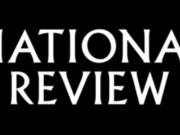In the Supreme Court’s closely watched redistricting case, the Court’s progressive justices queried the counsel for the Wisconsin Legislature for unseemly motives, aware a favorable ruling would boost the state’s Republicans. As Justice Elena Kagan stated: Legislators think “often — not always — but often about [future] elections …and they use methods in order to ensure that certain results will obtain not only in the next one but eight years down the road.”
Yet these same justices dispel similar dubious motives in campaign finance cases. By deferring to legislators writing campaign rules, the justices miss the same interplay between law and the desire for power and reelection. Incumbents use both campaign rules and gerrymandered maps to preserve power.
Ever since Plato (“The Republic”) and Aristotle (“Politics”), the West has viewed producing morally correct policy as policymaking’s lodestar. This thinking divided man’s self-interested commercial endeavors from his public-spirited political ones.
The façade cracked starting in the 1960s when two scholars applied economic principles to political science in what became public choice theory. Five public choice economists later won Nobel Prizes in economics. Distilled to one sentence public choice held Homo Economicus and Homo Politicus are the same, or mundanely: The man at the supermarket is the same man in the voting booth. Both act primarily in self-interest. This may seem obvious but even today garners vitriolic rebuke by those clinging to political romanticism.
Supreme Court progressives embrace public choice’s suspicion of legislative motives in map drawing but cling to old tropes in campaign finance. On campaign finance cases, the same politicians acquire “expertise” that entitles lawmakers to deference. Justice Stephen Breyer, dissenting from the Court’s most recent campaign finance and joined by the its other progressives, stated, “These kinds of questions [about contribution limits, corruption, corrupt appearances, and confidence in government] while not easily answered, are questions that Congress is far better suited to resolve than are judges.”
The court should realize when former Senate Majority Leader Harry Reid spent an entire summer pushing a constitutional amendment that would allow Congress to set “reasonable limits” on political activity, power and partisan politics likely fueled him, not the stated goal of political equality. Or, when Democrats annually push the DISCLOSE Bill, transparency is a secondary goal.
The late Justice Antonin Scalia grasped this dynamic best. In his dissent in McConnell v. FEC that upheld the 2002 McCain-Feingold law against constitutional challenge Scalia ticked off the ways which the massive law benefitted incumbents: ‘hard money’ advantage, lobbyist fundraising advantage, the millionaire’s provision raising incumbent contribution limits against wealthy self-funders, and gutting the party apparatus that is especially helpful to challengers. Justice Anthony Kennedy in the same case agreed, discounting proffered legislative rationales and calling certain provisions an “incumbency protection plan.”
As these justices describe, lawmakers concoct contribution limits and onerous compliance rules to stifle upstarts. Politicians justify the limits’ admitted First Amendment incursions because money corrupts them or appears that way to voters. Excess flows to Super PACs and nonprofits that compete with candidates for voter attention.
That the Court should accept lawmaker estimates on their corruptibility via contribution or other speech limits is absurd. Applying economic principles to legislative behavior reveals that, not corruption, but self-preservation usually guides these limits.
By handicapping challengers, the limits themselves “corrupt” lawmakers by enabling safer districts. The court’s progressives would be wise to consider the motives of those writing the rules in future campaign finance cases.
This post originally ran in Journal Sentinel on October 23rd 2017.














